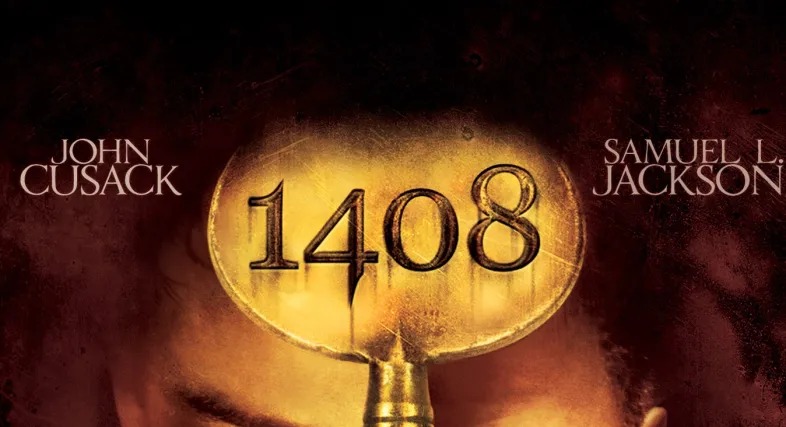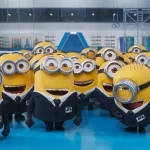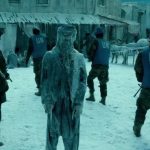1408 (2007)

“1408,” directed by Mikael Håfström and released in 2007, stands as a notable entry in the genre of psychological horror. Adapted from a short story by the acclaimed author Stephen King, the film delves into themes of grief, skepticism, and the supernatural. With a tagline that ominously warns, “The Dolphin Hotel invites you to stay in any of its stunning rooms. Except one,” 1408 masterfully creates an atmosphere of dread and uncertainty, making it a compelling study in horror cinema.
The film centers on Mike Enslin, a skeptical author who specializes in debunking paranormal phenomena. Played by John Cusack, Enslin is a man whose career has been built on disproving the supernatural. When he receives an anonymous tip about the haunting of room 1408 at the Dolphin Hotel, he decides to investigate, dismissing it as another case of ghostly fiction. However, upon entering the room, Enslin experiences a series of increasingly disturbing and terrifying events that challenge his disbelief and force him to confront his own personal demons.

At its core, 1408 explores the battle between belief and skepticism. Mike Enslin’s character arc reflects a deeper struggle with grief and personal trauma. His skepticism is not just a professional stance but a shield against the emotional pain of losing his daughter. The supernatural occurrences in room 1408 serve as a metaphor for his unresolved grief and guilt, transforming the haunted room into a psychological battleground.
The film effectively blurs the line between reality and illusion, drawing viewers into a disorienting experience that mirrors Enslin’s own confusion and fear. The room’s ability to distort time and space challenges the audience’s perception, enhancing the psychological horror elements. This manipulation of reality underscores the film’s exploration of internal versus external horrors, making the supernatural elements a reflection of the protagonist’s inner turmoil.

Mikael Håfström’s direction and the film’s cinematography play crucial roles in building tension and unease. The claustrophobic setting of room 1408, coupled with the film’s use of lighting and sound, creates an oppressive atmosphere that heightens the sense of dread. The room itself becomes a character, its seemingly ordinary appearance contrasting sharply with the horrors that unfold within its walls.
The visual style of 1408 employs unsettling imagery and sudden shifts in perspective to disorient viewers, enhancing the psychological impact. The film’s ability to evoke a sense of isolation and entrapment is further amplified by the confined setting and the protagonist’s struggle to escape the room’s grasp.
John Cusack delivers a compelling performance as Mike Enslin, capturing the character’s journey from disbelief to terror with depth and nuance. His portrayal adds emotional weight to the film, making Enslin’s experiences both relatable and harrowing. The supporting cast, including Samuel L. Jackson as the enigmatic hotel manager, adds layers to the narrative, enriching the overall experience.

1408 has received praise for its ability to blend psychological and supernatural horror effectively. It stands out in the horror genre for its focus on character-driven storytelling and its exploration of themes beyond mere scares. The film’s success lies in its ability to engage viewers emotionally while delivering a chilling and suspenseful narrative.

In conclusion, 1408 (2007) is a distinguished film within the horror genre, thanks to its adaptation of Stephen King’s short story, its exploration of psychological themes, and its effective use of atmosphere and performance. The film’s ability to weave a tale of supernatural terror with a profound emotional core ensures its place as a memorable and impactful entry in the world of horror cinema. Its legacy is a testament to the power of psychological horror and the enduring appeal of Stephen King’s storytelling.











